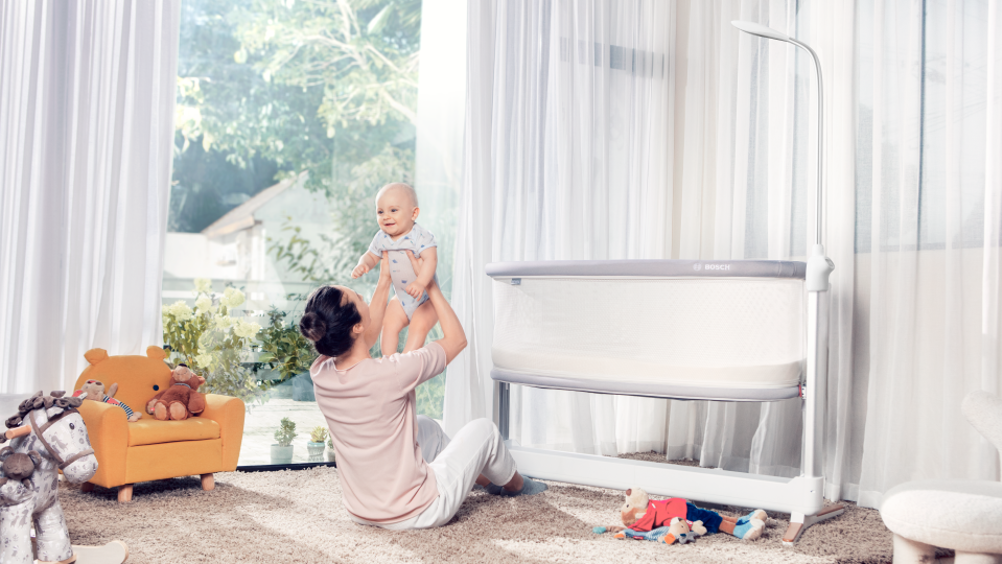Revol smart crib helps parents with infant welfare
Bosch has developed a smart crib that uses sensors and AI to help parents take care of their baby’s welfare.

Debuted at CES 2025 in Las Vegas, the Revol smart crib performs several functions such as monitoring vital signs, identifying if the baby’s face is covered, identifying the need for a nappy change, analysing sleep and recognising cries, and using its motorised drive to rock a baby to sleep. Parents are informed of any anomalies via an alert on a smartphone app.
Due for launch this year, the Revol smart crib can also monitor a baby’s longer-term health trends.
Radar is used to capture the vital signs such as heart rate and breath rate. A Bosch spokesperson explained that millimetre-wave radar collects heart rate data by emitting high-frequency electromagnetic waves and analysing the reflections from a baby’s chest and face.
As the chest moves with each heartbeat, these subtle movements alter the reflected signal, allowing the radar to detect changes in distance and motion.
By processing these variations, the radar can accurately measure the heart rate in real-time without physical contact.
Register now to continue reading
Thanks for visiting The Engineer. You’ve now reached your monthly limit of news stories. Register for free to unlock unlimited access to all of our news coverage, as well as premium content including opinion, in-depth features and special reports.
Benefits of registering
-
In-depth insights and coverage of key emerging trends
-
Unrestricted access to special reports throughout the year
-
Daily technology news delivered straight to your inbox










Water Sector Talent Exodus Could Cripple The Sector
Maybe if things are essential for the running of a country and we want to pay a fair price we should be running these utilities on a not for profit...